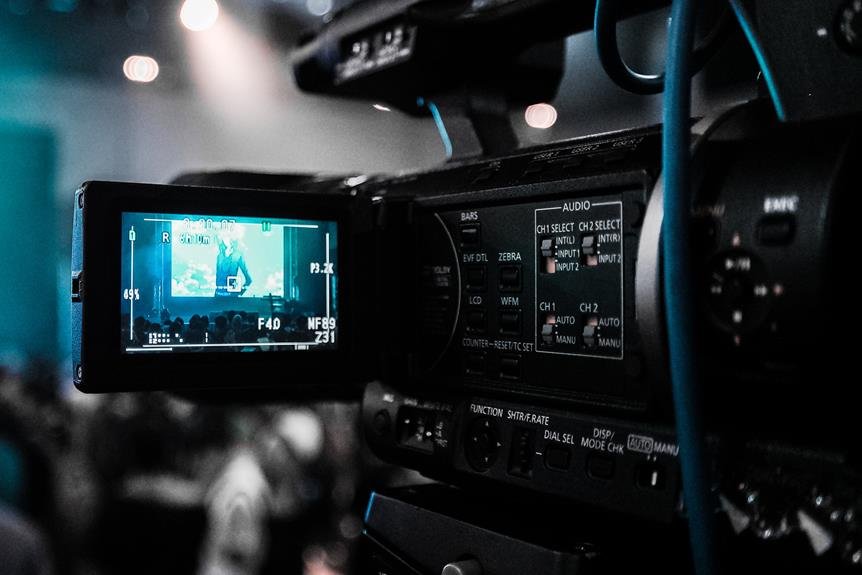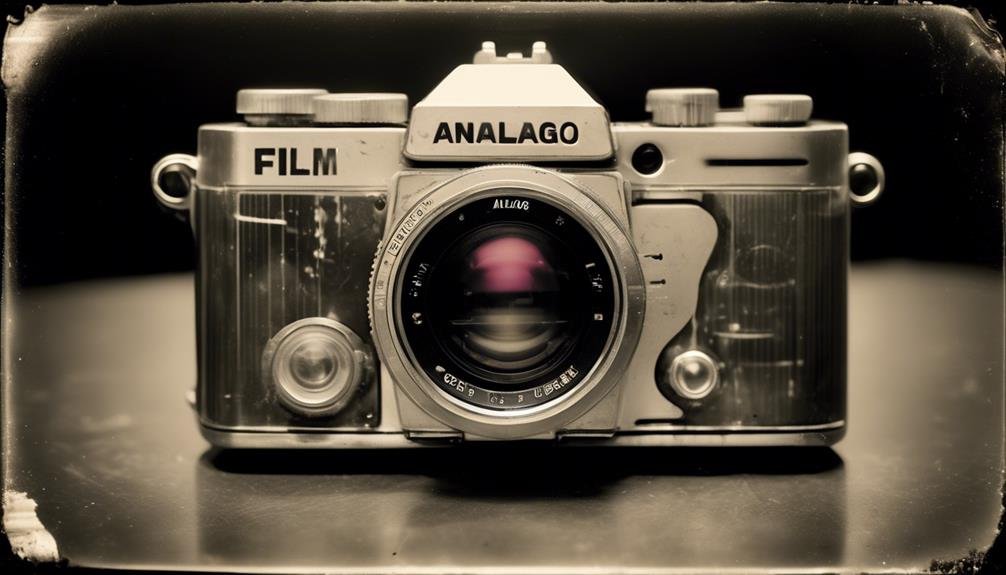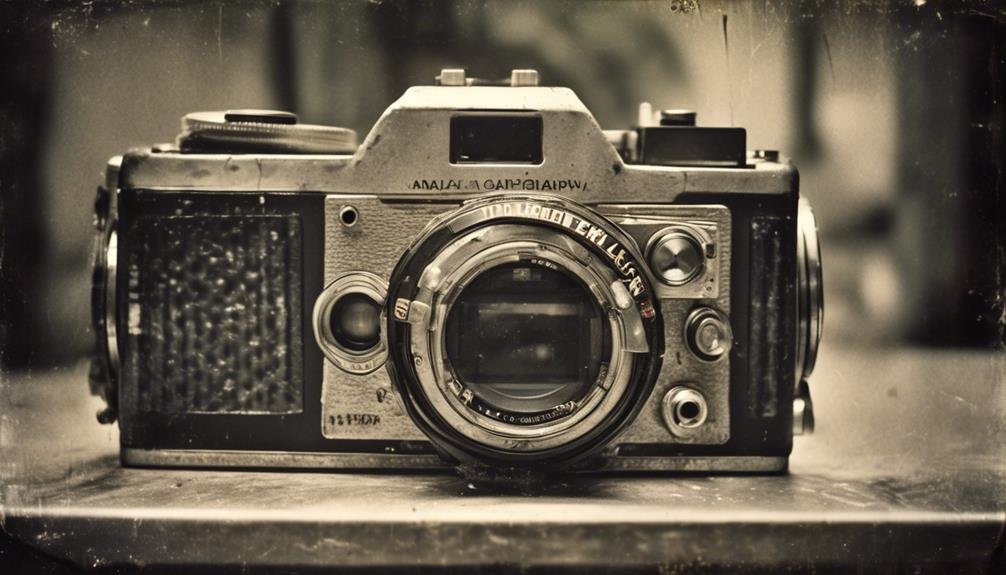
Ever wondered why some mirrorless cameras seem to have endless video recording capabilities while others cut off after a few minutes? Well, there are several factors that come into play when it comes to the video recording duration of mirrorless cameras. From sensor size and heat management to battery capacity and power management, these elements can greatly impact how long you can record high-quality videos. But that's not all – the video codec and bitrate, as well as the camera body size and weight, also play crucial roles in determining the recording duration. And let's not forget about the external recording options that can further extend your shooting time. So, what exactly affects the video recording duration of mirrorless cameras?
Sensor Size and Heat Management
As mirrorless cameras continue to push the boundaries of video recording duration, sensor size and heat management play a crucial role in maintaining optimal performance and preventing overheating issues. The sensor size directly impacts the camera's ability to capture light, affecting low light performance and overall image quality. With larger sensors, mirrorless cameras excel in capturing more light, resulting in better image quality, especially in challenging lighting conditions. Moreover, heat management is pivotal for sustained video recording. Advanced heat dissipation systems and efficient sensor design are essential to prevent overheating, ensuring uninterrupted video capture.
When it comes to video recording, lens compatibility, autofocus speed, and image stabilization are also key factors influenced by sensor size and heat management. Mirrorless cameras with larger sensors often require specific lenses to fully utilize their capabilities. Additionally, the autofocus speed and effectiveness of image stabilization systems depend on the sensor's ability to process information and manage heat effectively. As technology advances, innovative solutions in sensor design and heat management continue to enhance the video recording capabilities of mirrorless cameras, promising even better performance and reliability.
Video Codec and Bitrate
Sensor size and heat management significantly impact the video recording capabilities of mirrorless cameras, and when considering the video codec and bitrate, these factors continue to play a crucial role in determining the camera's performance. The video codec determines how the video is compressed and stored, affecting compression efficiency and storage capacity. A higher compression efficiency allows for more video data to be stored in the same amount of space, optimizing storage capacity. Additionally, the bitrate, measured in Mbps, determines the data transfer speed and file size limit. A higher bitrate results in larger file sizes, which demand more storage space and faster data transfer speeds for recording and playback.
| Video Codec | Bitrate (Mbps) |
|---|---|
| H.264 | 100 |
| H.265 | 200 |
| ProRes | 500 |
Understanding the interplay between video codec and bitrate is essential for optimizing video recording. A more efficient codec with a higher bitrate can produce higher quality videos, but it also requires more storage capacity and faster data transfer speeds. As technology advances, the development of more efficient codecs and higher bitrate capabilities continues to push the boundaries of mirrorless cameras' video recording capabilities.
Battery Capacity and Power Management

Maximizing battery capacity and optimizing power management are essential considerations for ensuring prolonged and efficient operation of mirrorless cameras during video recording. The battery life of a mirrorless camera greatly influences its video recording duration. Innovations in battery technology and power management have significantly improved the performance of mirrorless cameras. Manufacturers are constantly striving to enhance the charging speed and battery life of their devices, allowing users to record for extended periods without interruptions.
Power consumption is another critical factor that directly impacts battery life during video recording. Efficient power management systems are essential for minimizing power wastage and maximizing the camera's operational duration. Temperature control also plays a vital role in maintaining battery efficiency. High temperatures can adversely affect battery performance, leading to reduced capacity and overall lifespan. Therefore, innovative cooling systems and thermal management technologies are being integrated into mirrorless cameras to mitigate these issues.
Camera Body Size and Weight
Enhancing the portability and maneuverability of mirrorless cameras, the compact design and lightweight construction of the camera body are pivotal factors that significantly impact the user experience. Here's how camera body size and weight affect the performance and functionality of mirrorless cameras:
- Portability: A smaller and lighter camera body makes it easier to carry the equipment for extended periods, enabling photographers and videographers to capture moments with ease and flexibility.
- Stability: The size and weight of the camera body also play a role in providing stability, especially when shooting handheld or in challenging environments. This stability is crucial for achieving sharp and steady shots.
- Lens Compatibility: The camera body size may influence the compatibility with different lenses, affecting the overall versatility and capabilities of the camera system.
- Image Stabilization: A compact and lightweight camera body may impact the effectiveness of in-body or lens-based image stabilization systems, which are essential for reducing motion blur and capturing smooth videos and sharp photos.
When considering camera body size and weight, it's essential to also evaluate how these factors interact with memory card speed and compatibility to optimize the overall performance of the mirrorless camera system.
External Recording Options

Considering the impact of camera body size and weight on the overall performance and functionality of mirrorless cameras, it's essential to explore the external recording options available to enhance the video capabilities of these compact and versatile camera systems. When it comes to external recording, storage capacity and file format compatibility are crucial factors to consider. External recorders offer larger storage capacities than internal memory, allowing for extended recording times and the ability to capture high-resolution footage without the limitations of internal storage. Additionally, they often support a wide range of file formats, providing flexibility for different post-production workflows.
Another important aspect to consider with external recording options is the recording environment, especially temperature fluctuations. Some external recorders are designed to withstand extreme temperatures, ensuring consistent performance in challenging conditions. This becomes particularly important for videographers working in outdoor or harsh environments where temperature changes can affect the camera's internal components and recording capabilities.
Innovations in external recording options continue to address the evolving needs of videographers, offering improved storage, flexibility in file formats, and resilience to varying environmental conditions. These advancements contribute significantly to the overall video recording experience with mirrorless cameras.
Frequently Asked Questions
Can Mirrorless Cameras Record in 4K Resolution?
Yes, mirrorless cameras can record in 4k resolution. However, it's essential to consider resolution compatibility and storage capacity to ensure smooth recording. With the right setup, mirrorless cameras offer stunning 4k video capabilities.
How Does the Choice of Lens Affect Video Recording Duration?
Choosing the right lens is pivotal. Lens compatibility influences video recording duration in mirrorless cameras. Focal length limitations impact the amount of light reaching the sensor, affecting the camera's ability to maintain video recording.
Are There Any Settings That Can Be Adjusted to Extend Video Recording Time?
To extend video recording time on mirrorless cameras, we adjust settings like recording format for efficient storage usage, monitor battery life for longer operation, optimize storage capacity, and consider external cooling to prevent overheating.
Can the Camera Overheat During Long Video Recording Sessions?
Absolutely, during extended recording, our mirrorless camera may overheat, triggering recording limitations. To alleviate this, we monitor the camera's cooling system, use external fans, or employ heat-resistant accessories to ensure uninterrupted video capture.
What Is the Impact of Environmental Conditions on Video Recording Duration?
Environmental conditions like humidity and temperature fluctuations directly impact mirrorless cameras' video recording duration. High humidity can lead to condensation inside the camera, while extreme temperatures can affect battery life and sensor performance, affecting recording duration.
